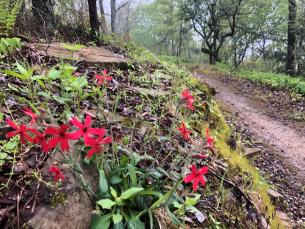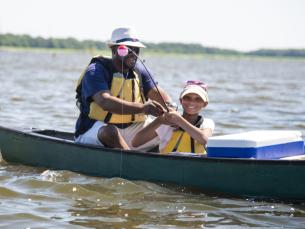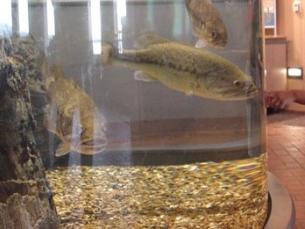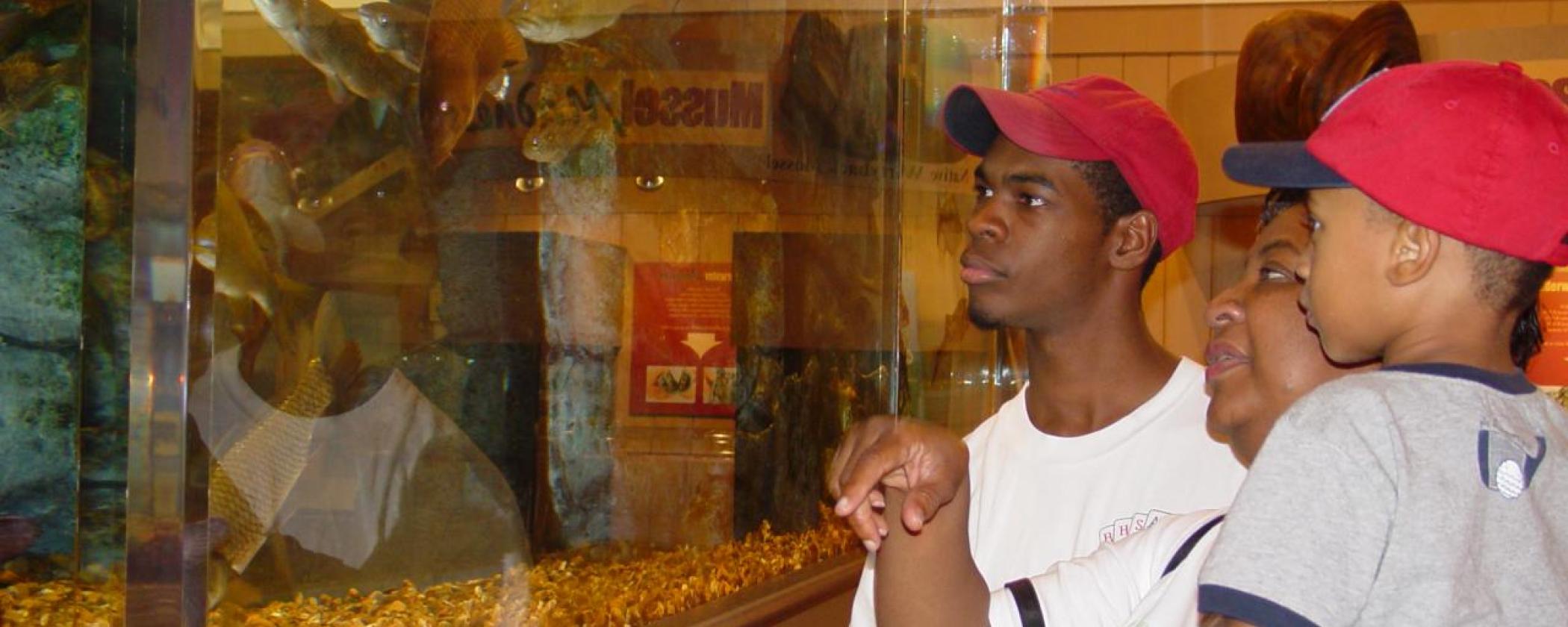
Mayflies: Nuisance or Nutrient?
By: Sasha BowlesFishing is a favored pastime at Lake Dardanelle State Park, making people the top of this food chain. We love to catch fish, but often don’t think of all the creatures it took to build that strong healthy fish on the end of our fishing line. Mayflies are an essential part of the food chain that keeps the fishery at Lake Dardanelle State Park healthy. In this photo essay, you will discover how mayflies contribute to the health of the food chain throughout their life cycle.
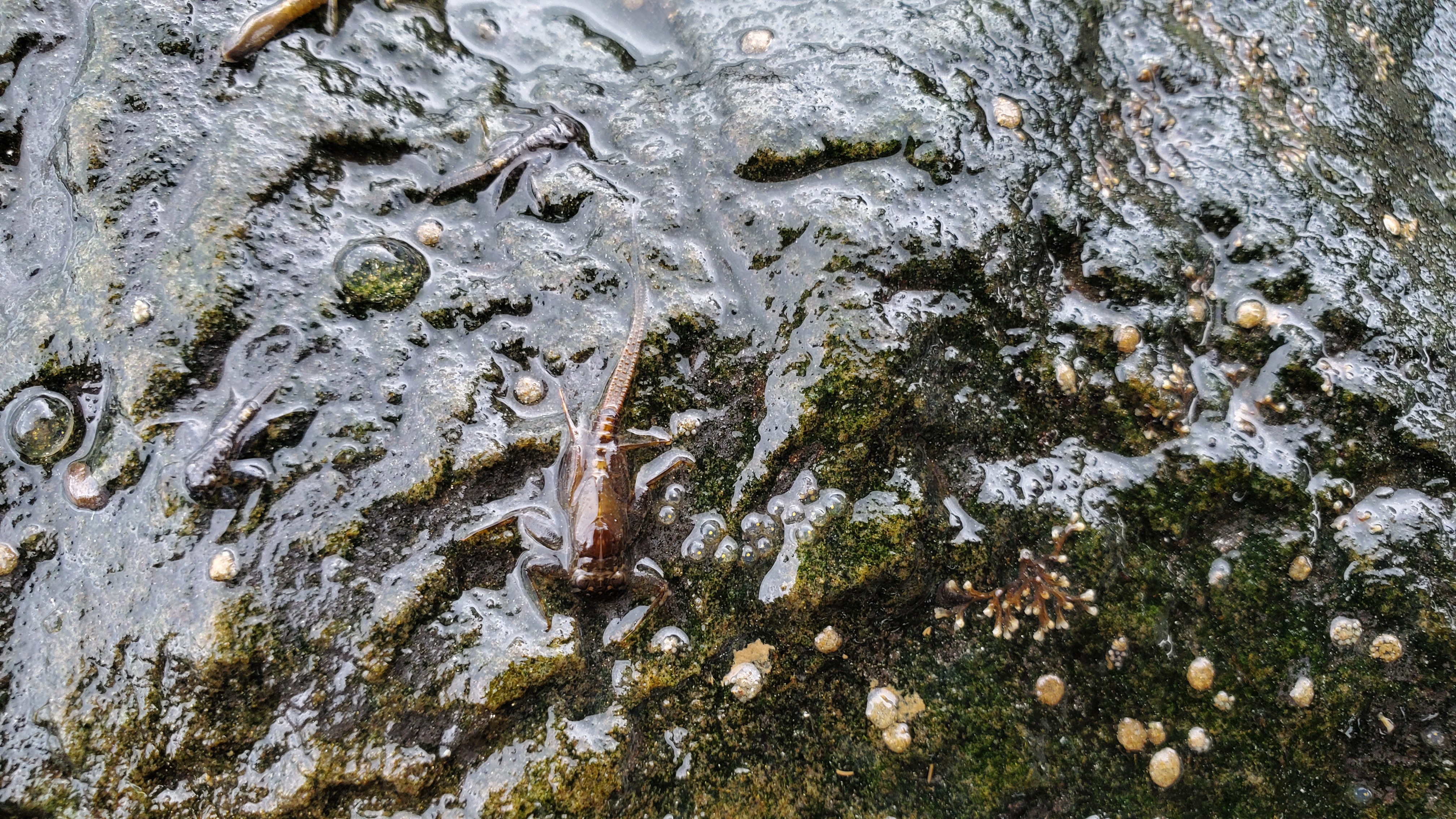 Nymph close up
Nymph close up
Mayflies begin their lives in the water, where the female lays her eggs. The eggs stick to the rocks underwater. The eggs will hatch within a few days to a few weeks, depending on the water conditions and the species of mayfly. Not all the eggs make it; some become food for snails and other insect larvae.
After hatching, the nymph looks a bit different from the adult. The nymph has six legs and three long tails, with a very stocky body and wide head. Mayfly nymphs spend their time in the water swimming and hiding on the underside of rocks.
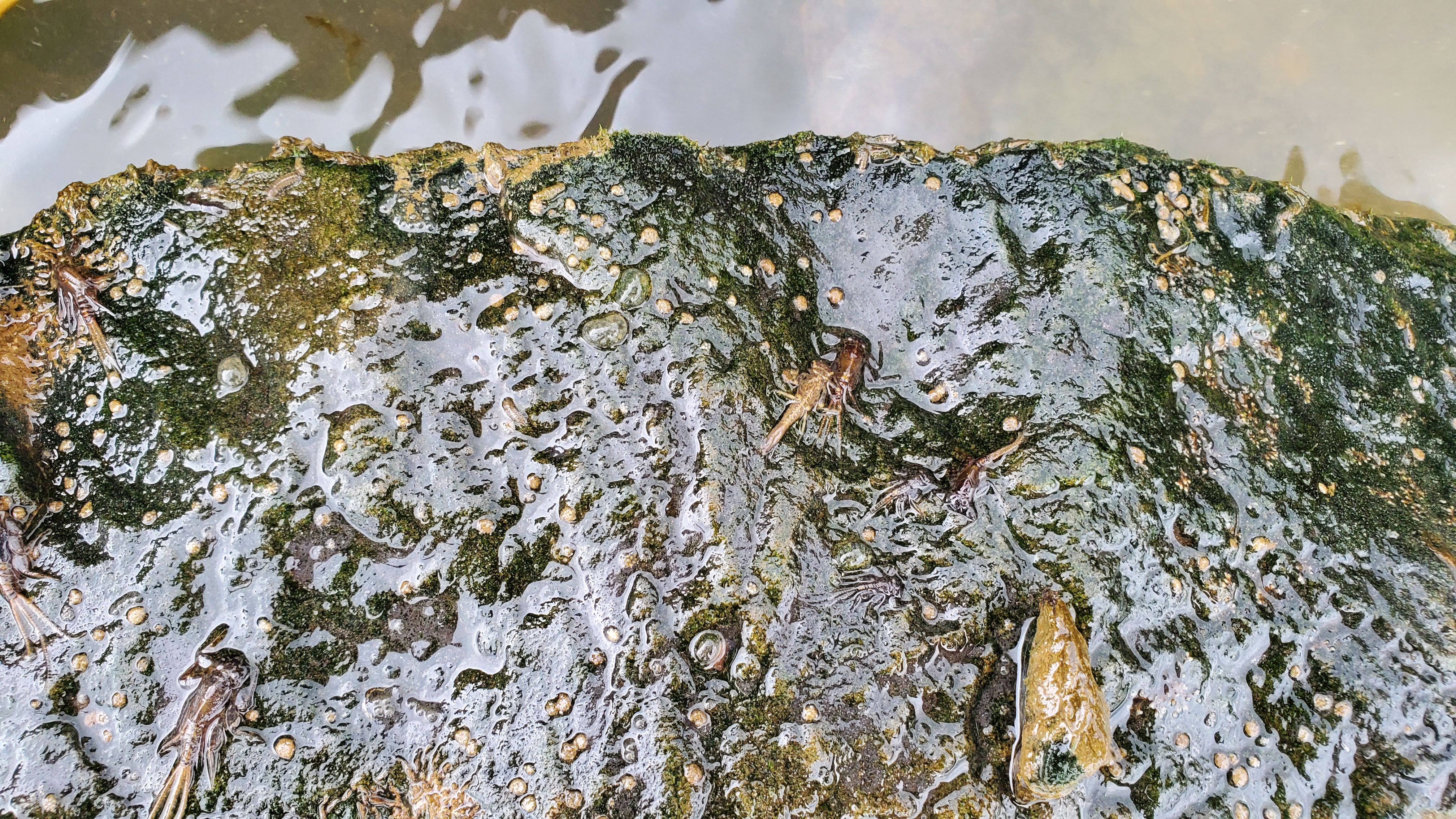 Nymphs
Nymphs
After hatching out of their egg, nymphs spend up to 3 years living in the water, eating algae. They are consumers through most of their life cycle. Some nymphs are eaten by other insects, fish, and birds. From the nymph stage they will emerge from the water and molt before they become adult mayflies. At that time, they spend their ONE day as an adult swarming, mating, laying eggs (females), and then they die. How many nymphs can you find in this picture above?
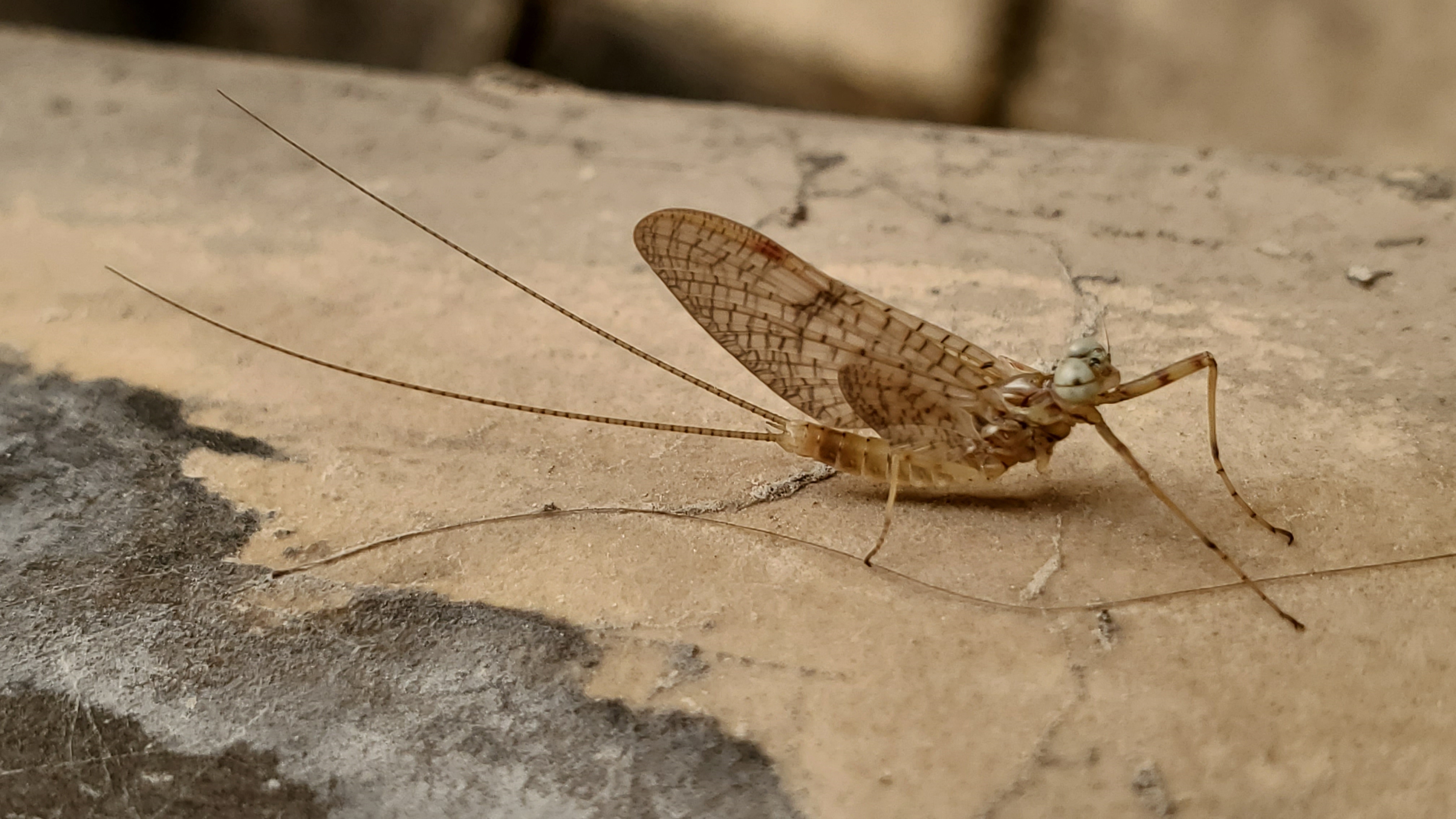 Adult mayfly
Adult mayfly
Mayflies are intertwined in the diets of many other animal species that live in and around the lake. Adult mayflies feed birds, bats, hornets, dragonflies, spiders, beetles, robber flies, even flying squirrels and fish. When the adults die and fall to the water’s surface they are plucked down by fish. They are a big contributor to the diets of the fish we love to catch and even eat. Without mayflies, the health of Lake Dardanelle’s fishery might be drastically different.
At this stage of life, adult mayflies are no longer consumers, so they do not have mouth parts for eating. When they hatch, their numbers may seem overwhelming, but they are not harmful to us (they don’t bite) or the environment. They are in fact, very beneficial. Mayflies are an essential part of the food chains that keep our fishery at Lake Dardanelle healthy. Next time you are out fishing, don’t be afraid of being bitten by a mayfly. Put one on a hook and catch a fish!
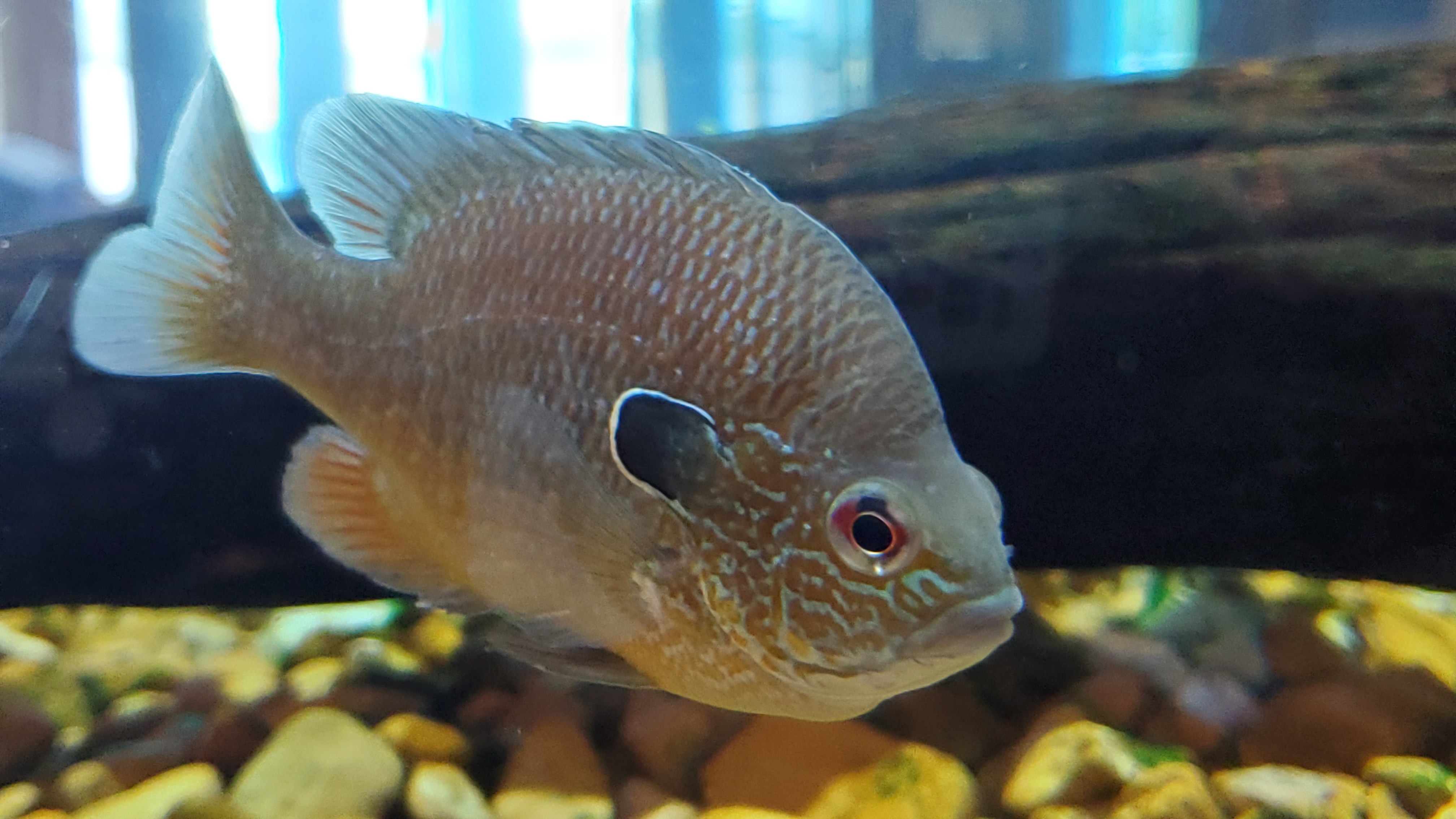 Longear Sunfish
Longear Sunfish
Longear sunfish have very small mouths, making them a prime consumer of aquatic insects like mayflies. In the lakes and rivers where they live, they spend their time in the grasses and areas of structure underwater. These places not only give them shelter, but also shelter the aquatic insects they need for nourishment. They must eat lots of insects and worms to stay strong and healthy.
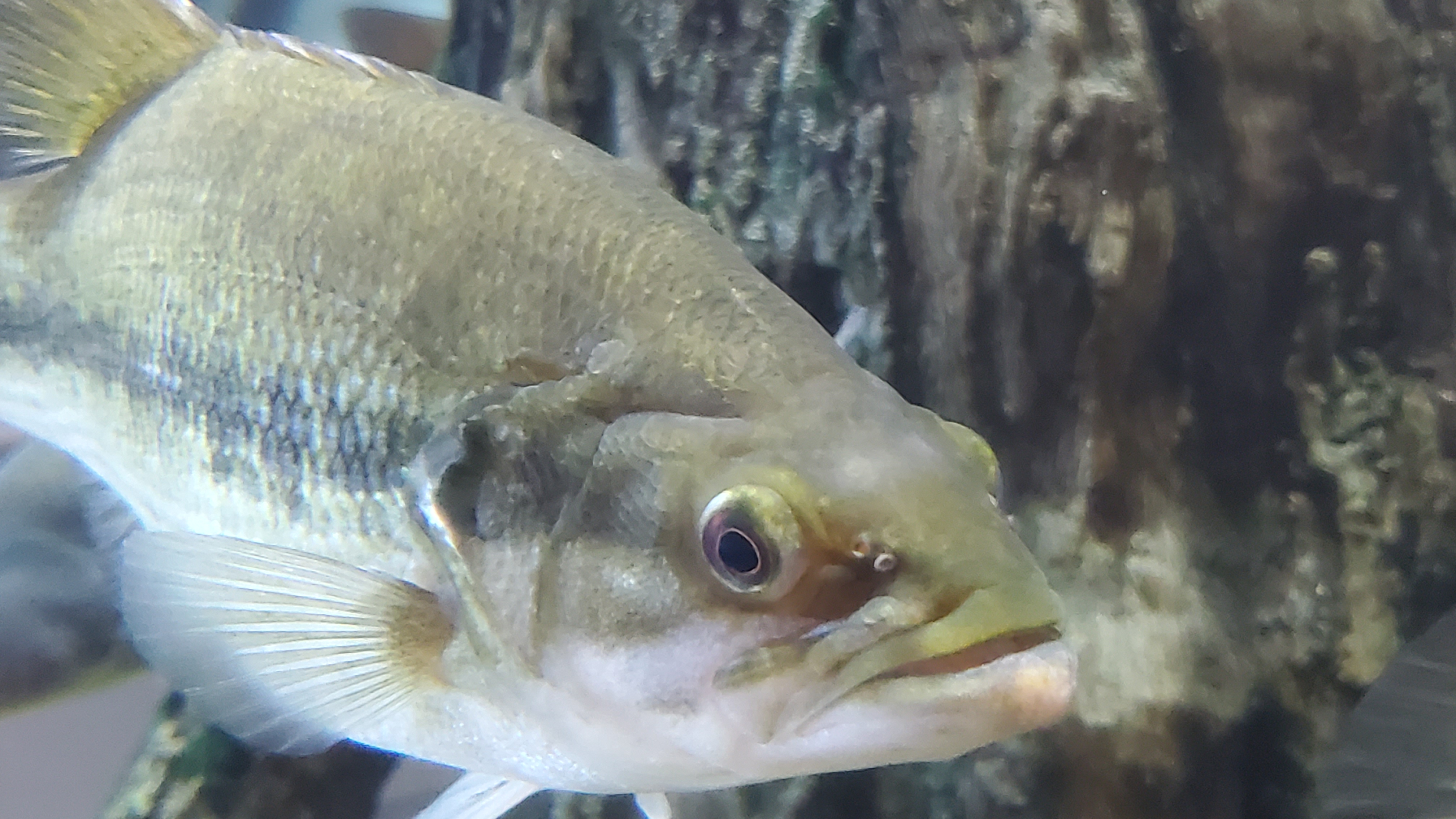 Spotted Bass
Spotted Bass
As one of the larger species in Lake Dardanelle, bass have a huge energy budget. They must eat a lot of sunfish as well as lots of mayflies. As with any creature, they start out small and must eat small things, like mayfly nymphs and other insects before graduating to sunfish and adult mayflies. We have several species of bass in Lake Dardanelle, and at the peak of the mayfly hatch, you can see them skimming the surface of the water eating mayflies.
Mayflies are an essential part of the food chain that keeps the fishery at Lake Dardanelle State Park healthy. When you visit the park and experience a mayfly hatch, you don’t need to be afraid of these insects. They will not bite or sting. They are only able to fly for about one day, to complete their lifecycle.
Consider a visit to the Lake Dardanelle State Park visitor center and check out the aquariums, where you can see some of the fish species that depend on mayflies throughout their lifecycles.
Lake Dardanelle State Park is one of Arkansas’s 52 state parks. The main site of the park is in Russellville on the shore of Lake Dardanelle, a 34,300-acre reservoir on the Arkansas River. The park is dedicated to enriching the lives of residents and visitors of the Arkansas River valley through resource stewardship, recreation, interpretation, and protection. Lake Dardanelle’s fishery is healthy and diverse, offering you the thrill of nature and the success of the catch.

